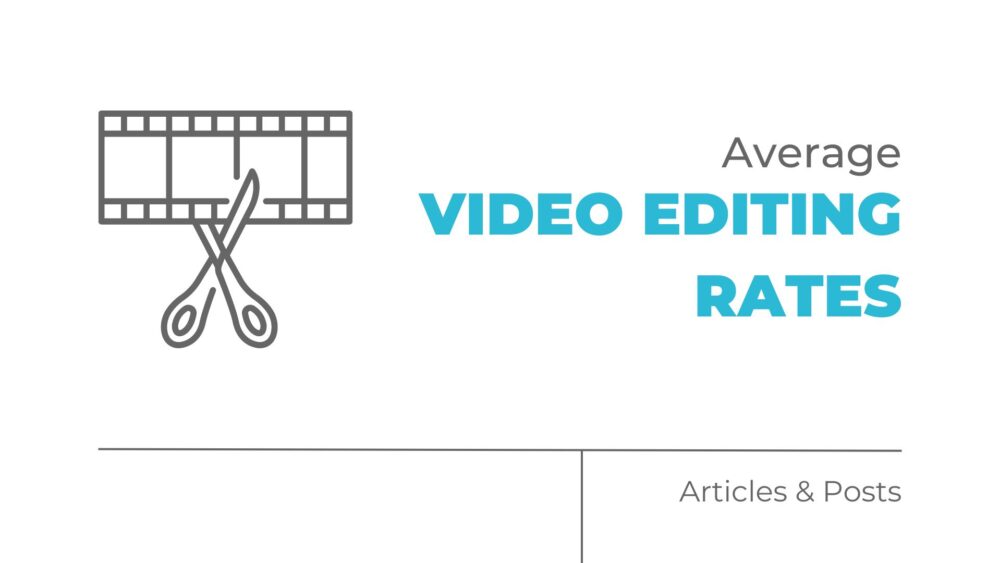Did you know that businesses using video design in their marketing strategies see a 49% faster revenue growth than those who don’t?
How can you effectively determine the right rate for your video projects?
On average, video editing rates range from $50 to $150 per hour, depending on various factors such as the editor’s experience, project complexity, and turnaround time.
Understanding these factors and asking the right questions can help you make informed decisions.
Factors that Impact Video Editing Rates
Several factors can influence the rates charged by video editors.
By understanding these factors, you can better anticipate costs and find the right balance between quality and budget.
Experience and Expertise
One of the biggest factors affecting video editing rates is the editor’s experience and expertise.
Editors with years of experience and a solid portfolio typically charge higher rates because of their refined skills and efficiency.
On the other hand, less experienced editors might offer lower rates but may not deliver the same level of quality.
Complexity of the Project
The complexity of your project also plays a big role.
Projects that need intricate editing techniques, multiple layers of effects, or extensive revisions will naturally cost more than straightforward edits.
It’s important to clearly communicate your project requirements to get an accurate estimate.
Turnaround Time
Urgency can really bump up video editing rates.
If you need your video edited quickly, you might have to pay extra for expedited services.
Planning your project timeline in advance can help you avoid these additional costs.
Tools and Software
The type of tools and software used by the editor can also affect rates.
High-end editing software and equipment can boost the quality of the final product but may come at a higher cost.
Be sure to ask about the tools your editor will be using.
Revisions and Changes
Most video editing services include a certain number of revisions in their rates.
However, too many changes or extra revisions beyond the initial agreement can lead to increased costs.
To manage your budget effectively, make sure you understand what is included in the service package.
Questions to Ask When Negotiating Editing Rates
To get the best value for your money, it’s important to ask the right questions when negotiating with a video editor.
Here are some key questions to consider:
What is Included in the Rate?
Understanding what the quoted rate covers is essential.
Does it include color correction, audio mixing, special effects, or just basic editing?
A detailed breakdown can prevent misunderstandings and additional charges later on.
How Do You Handle Revisions?
Clarify the number of revisions included in the rate and the cost for additional changes.
Knowing this upfront can help you manage expectations and budget accordingly.
Can You Provide Samples of Similar Work?
Reviewing samples of the editor’s previous work can give you a good idea of their style and quality.
It also helps to see if their expertise matches your project’s needs.
What is the Estimated Turnaround Time?
Discussing the timeline for project completion can help you plan your schedule and avoid last-minute rush fees.
Be clear about your deadlines and ask if the editor can meet them.
Are There Any Additional Costs?
Inquire about any potential extra costs, such as for specific software usage, additional revisions, or faster delivery.
Transparency on these matters can help you avoid unexpected expenses.
How Can You Minimize Your Video Editing Costs?
Managing video editing costs can be tricky, but there are several strategies you can use to keep expenses under control without sacrificing quality.
Plan and Organize Your Project
Having a well-organized plan and a clear vision for your project can save time and money.
Provide the editor with a detailed brief, including the desired style, length, and any specific effects or transitions you want.
This clarity can reduce the need for revisions and streamline the editing process.
Provide High-Quality Footage
Starting with high-quality footage can make the editing process smoother and faster.
Poor-quality footage often requires additional work to fix, which can increase costs.
Make sure your footage is well-lit, stable, and of high resolution to minimize editing time.
Limit Revisions
While it’s important to get the final product you want, limiting revisions can help control costs.
Provide comprehensive feedback in one go rather than requesting multiple rounds of changes.
This approach can make the editing process more efficient and cost-effective.
Use Templates and Pre-sets
If your project allows, using templates and pre-sets can significantly reduce editing time.
Many editors have access to a library of pre-made templates for common video types, which can be customized to fit your needs at a lower cost.
Negotiate a Flat Rate
Whenever possible, negotiate a flat rate for the entire project instead of an hourly rate.
This arrangement can provide more predictability in your budget and often results in a more focused and efficient editing process.
At the End of the Day
Understanding the average video editing rates involves considering various factors, from the editor’s experience to the project’s complexity and urgency.
By asking the right questions and implementing cost-saving strategies, you can keep your video editing project within budget while maintaining high quality.
If you’re looking for professional video editing services that deliver great results, we can help.
Our team at Mock, the Agency offers a comprehensive video editing services list that caters to diverse needs, making sure you get the best value for your investment.


Comments are closed.